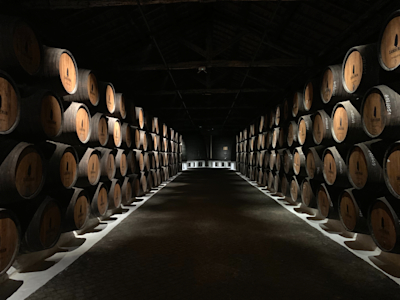Wine That Get's Better With Age
Wine investing continues to gain traction as an alternative asset class, but exactly makes a fine wine investment-grade? These wines are those rare and exceptional bottles that attract the attention of both collectors and investors alike on the secondary market. These sought-after wines possess unique qualities that make them desirable assets for individuals looking to diversify their portfolios and potentially earn returns through wine investing.
These are some of the key factors that determine the value and investment potential of these wines.
Rarity
In the world of wine investing, rarity is highly prized. Investment-grade wines are often produced in limited quantities or sourced from prestigious vineyards known for their outstanding quality. Producers of such prestige tend to sell out their vintages quickly, meaning they’re hard for consumers to get their hands on. This scarcity makes them highly sought after on the secondary market. As demand exceeds supply, the value of these wines tends to appreciate over time, presenting an attractive opportunity for wine investors.
Vintage
Not all years are the same when it comes to wine. Weather, the harvest, a little bit of luck; even from the best producers there are many variables that factor into making a great wine. Great vintages combined with maturation play a crucial role in determining the value of investment-grade wine. Older wines that have been aged properly tend to command higher prices. With age, wines undergo a transformative maturation process, developing complex flavors and aromas. Wines with longer aging potential, such as those from renowned regions like Bordeaux or Burgundy, are often sought after by wine investors seeking bottles that will develop over time, and potentially appreciate in value.
Brand Reputation
The reputation of the winery or vineyard behind the wine greatly influences its investment potential. Well-established brands with a history of producing exceptional wines are particularly attractive to wine investors. Producers such as Château Margaux, Domaine de la Romanée-Conti, and Opus One have built a reputation for consistently delivering top-quality wines. These esteemed brands carry a significant premium in the market, making their bottles ideal investment-grade options.
Condition and Provenance
The condition of investment-grade wine is more important that some might think. Bottles that have been stored under optimal conditions, such as controlled temperature and humidity, retain their quality and value over time. Wine investing stands to have the better market performance of assets when the wines that have been carefully preserved, with perfect labels, bottles, and packaging intact and free from damage. Pristine condition adds to the desirability and investment potential of these wines.
Examples of Investment-Grade Wines
Here are a few notable examples of investment-grade wines that have captivated collectors and investors:
Château Lafite Rothschild: Having been involved in the Bordeaux wine industry for hundreds of years, the Rothschild family’s flagship Lafite Rothschild Bordeaux blend has been a consistent part of the typical wine investing portfolio for decades.
Domaine de la Romanée-Conti, Romanée-Conti Grand Cru: Produced in Burgundy, this renowned estate consistently produces some of the world's most sought-after Pinot Noir wines. Its limited production and exceptional quality make it a prime investment-grade choice.
Screaming Eagle Cabernet Sauvignon: Hailing from Napa Valley, this cult wine is arguably the most sought after in America, and has gained a reputation for its exceptional quality and scarcity. Limited production and consistently high ratings have made it a highly sought-after investment-grade wine.
Investing in Wine the Right Way
Those attributes of what qualifies wines as investment-grade might seem simple on the surface, but actually trying to collect and invest in wines of this nature is easier said than done. Aside from studying up on the names of top brands like Romanee-Conti, you have to be certain that your sourcing is top notch, or you risk counterfeit bottles, damaged bottles, or wines that have not been properly stored to protect the contents.
Investing in wine can be an exciting and potentially rewarding endeavor, but it's important to approach it with a competent understanding of the asset class, or with the help of professionals. Selecting investment-grade wines that are likely to appreciate in value requires thorough research and prudent sourcing. Partnering with professionals such as Vint can provide access to expertise and diversified, securitized offerings of investment-grade wines that have been researched and built based on fundamental analysis and value.

